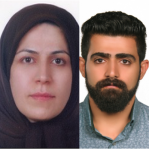Sport: A Substitute or a Motivation for War?
While Sport for Peace is widely seen as an emerging field, its antecedents can be traced back to the Olympic Truce where it was first used to settle temporary peace between warring states, to allow for competition among their athletes (SDPIWG, 2008). Sport is a main motivation for ethical, social, political, cultural and social changes. As Louise Frechette, United Nations Deputy Secretary-General, put it:
“The power of sport is far more than symbolic; you are the engines of economic growth. You are a force for gender equality. You can bring youth and others in from the margins, strengthening the social fabric. You can promote communication and help heal divisions between people, communities and entire nations (L’Etang, 2006, p.386)”.
Sport has a competitive nature and can have a twofold function. Although, sport has unique attributes which can contribute to promote peace, but it has some limitations. The ways that sport can give particular value to peace building processes are discussed below.
1. Promotion of globalization: globalization can promote peace through globalizing values like democracy, free access to the information, and promotion of development. Sports programs can be a tool to promote globalization process by sharing these values and bringing development.
2. Socialization: one of the latent functions of sport is the socialization of human beings. Sport helps us learn social roles like being responsible citizens. Socialization facilitates integration process and reinforces social inclusion.
3. Promotion of social inclusion: Sport brings different social, economic and cultural groups together within society, and builds a sense of shared identity among groups who otherwise might be inclined to conduct each other with distrust, hostility or violence (SDPIWG, 2008).
4. Promotion of human rights: in its broadest sense, sport can be linked to the human rights. UNESCO’s International Charter of Physical Education and Sport states that “access to physical education and sport should be assured and guaranteed for all human beings” (UNESCO, 1978, p.31). Sports programs also are an arena to voice human rights.
5. Promotion of democracy: Sport is the best way to teach social values such as respect, tolerance, solidarity, teamwork, fairness and is a constructive way to settle conflict where hatred and aggression can be controlled. Sport intrinsically transmits democratic values by strengthening civil structures and contributing to a culture based on peaceful values (UN, 2005).
6. An alternative to religion: Sport can be used as a tool to prevent young people joining terrorist groups. Today, sport in Britain is used to prevent Muslim youth to join ISIS, because it is a way to reintegrate youth into the society.
7. Promotion of development: sport programs have the potential to enhance and accelerate development efforts, particularly those related to realize the Millennium Development Goals (MDGs). Many states (including Sierra Leone, Tanzania, and Uganda) have integrated sport into their Poverty Reduction Strategy Papers (SDPIWG, 2008).
8. Conflict transformation: sport has unique integrating power which is helpful to overcome differences. Sport is useful in re-initiating dialogue between opposition groups when other channels are closed. For example, the 1971 “ping-pong diplomacy” between the United States and China is one of the other famous sport events which set the stage for the reopening of diplomatic ties between the two countries (UN, 2005).
Limitations of sport
While well organized sport programs have the potential to contribute to peace, but in some cases not only they cannot promote peace, but also can thereat peace. The sport attributes that can contribute to war are discussed below.
1. Promotion of violence: sport programs can be associated with risks like mass (fans) violence. News is rife with death of young men who lost their lives in sport violence.
2. Gender and ethnic representation: the history of sport programs has examples of sport- based racism and patriarchy. When Sport exceedingly focuses only on competition and winning at all costs, it can allow racism and prolong gender discrimination.
3. Promotion of nationalism: The states misuse sport to promote nationalism to mobilize the nations in order to realize their interests. In this respect, sport and extreme nationalism are used as tools at the states disposals.
There is no doubt that sport has played an important role in every society. But like other tools in peace building, sport has some attributes which can have a twofold use. But their contribution to war or peace depends on the policymakers and statesmen interests and goals. In order to be effective, sport must work together with other key stakeholders. Well designed and implemented sport programs can be helpful to prevent conflict and build peace around the world.
References
SDPIWG. (2008). Sport for Development and Peace International Working Group. (2008). Harnessing the Power of Sport for Development and Peace. Right to Play, Toronto.
L’Etang, J. (2006). Public relations and sport in promotional culture. Public Relations Review, 32(4), 386-394.
UN. (2005). Report on the International Year of Sport and Physical Education
UNESCO. (1978). International Charter of Physical Education and Sport. Adopted by the General Conference on 24 October to 28 November 1978, accessed on 12th April, 2016
Disclaimer: The views and opinions expressed in Peace and Sport Watch are those of the authors and do not necessarily represent the views of Peace and Sport.

